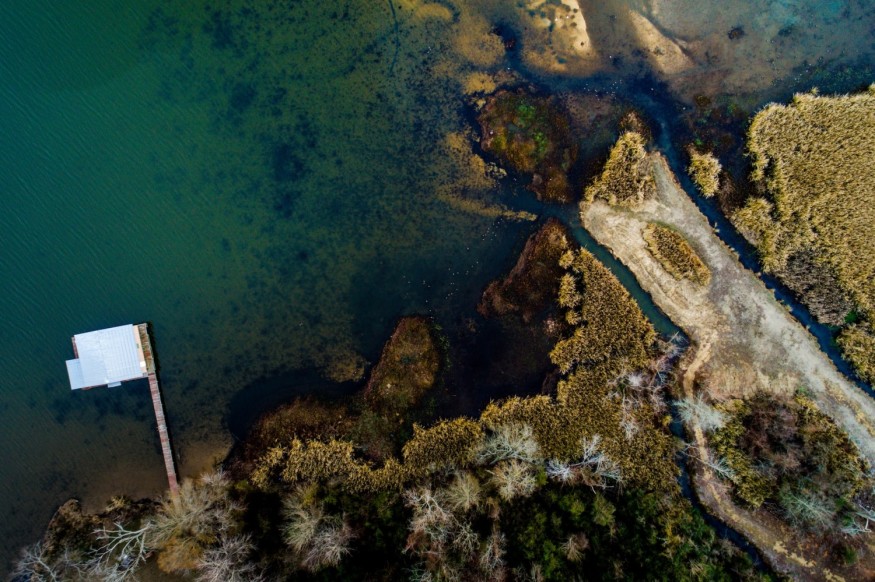Alabama's wilderness faces risks of destruction as environmental laws fall short in safeguarding Mobile River Basin's ecological treasures.
Among the states in the nation, Alabama ranks last when it comes to environmental protection spending. Only about 4% of the state's land is protected from development, whereas protected land in other states like California and Florida are close to 47% and 27%, respectively.
Furthermore, Alabama has no existing official rules governing the number of water industries that may draw from them, giving the companies guaranteed rights to the state's waters.

America's Amazon
The Mobile River Basin is a rich drainage basin that includes seven major river systems, encompassing 44,000 square miles in Georgia, Tennessee, Alabama, and Mississippi.
It is the sixth-largest basin in the nation. It ranks fourth in streamflow, with mean actual streamflow of about 64,000 cubic feet per second.
The Basin is one of the richest in the world, considering its naturally diverse environment with many species and types of habitat. New species are being discovered regularly in the state's flora and fauna.
The river drains parts of the four states, covering large forested areas, from Appalachian hardwood stands to haunted cypress swamps.
This biodiverse river network is home to more aquatic species of freshwater fish, mussels, snails, crawfish, and turtles compared to other states. Moreover, there are also more oaks on a single hillside on the banks of Alabama than anywhere else in the world. In fact, there are 97 species of crawfish and 450 species of freshwater fish in Alabama.
The Mobile-Tensaw Delta estuary system is home to 18 turtle species. That is significantly more than other river delta systems in the world like the Amazon and the Mekong.
There are also more species of flesh-eating pitcher plants in the state than can be found anywhere else. In 2012, nine new species of bottle flies were discovered in a single day.
Aside from animal diversity, the plants growing in the region are also noteworthy. For instance, 54 species of orchid thrive in the area.
Based on NatureServe's 2002 compendium on American diversity, Alabama topped the states' list in terms of aquatic diversity. The state's biological richness is also acknowledged after Alabama has been included in the top five states for the overall number of species of plants and animals. Other states in the list are California, Texas, Arizona, and New Mexico, all significantly larger in area than Alabama.
A Slow Decline
Over the years, this river system has remained mostly intact. Not much attention was given to these rich ecosystems in the 20th century, resulting in the state's distance from biologists.
Since Alabama has a predominantly rural economy, its wild places have not been extensively damaged by the nation's technological and industrial developments. However, recent developments in the community threaten to disrupt its biological community.
Habitat destruction and insufficient enforcement of environmental regulations endanger the Basin, making it an area vulnerable to extinction, particularly aquatic creatures. Data from the Endangered Species International and the U.S. Fish and Wildlife Service show that nearly half of the extinctions in the United States since the 1800s have occurred among creatures inhabiting the Mobile River Basin.
Mobile Bay now has annual dead zones due to excessive nitrogen and other nutrients from farms and suburban lawns.
The Silent Killer
As Alabama opens its gates to more ambitious development projects, its natural resources are at risk. The state has been transformed into a manufacturing hub for brands like Mercedes, Hyundai, and Honda. Its business-friendly labor laws and lax environmental regulations entice even an Australian company to build battleships for the Pentagon in Alabama. The shores of Mobile Bay was a spot for assembling Airbus jetliners in 2015.
Also, subdivisions and cities are quickly spreading in the state, taking areas originally used for agriculture. Growing industries like paper mills, steel mills, coal mines, and golf courses are also creating havoc in the environment.
Fertilization of farms affects the river systems and the biodiversity nestling in them. With some rivers dammed and channelized, pollution has become common. The runoff from farms, urban areas, and subdivision construction sites contaminate numerous rivers in the basin. Some streams have even dried out.
Due to alleged violations that have not been acted on, Alabama's Department of Environmental Management is now battling a petition that seeks to have the U.S. Environmental Protection Agency take over the administration of the state's Clean Water Act.
Check out for more news and information on Environment on Nature World News.
© 2025 NatureWorldNews.com All rights reserved. Do not reproduce without permission.





